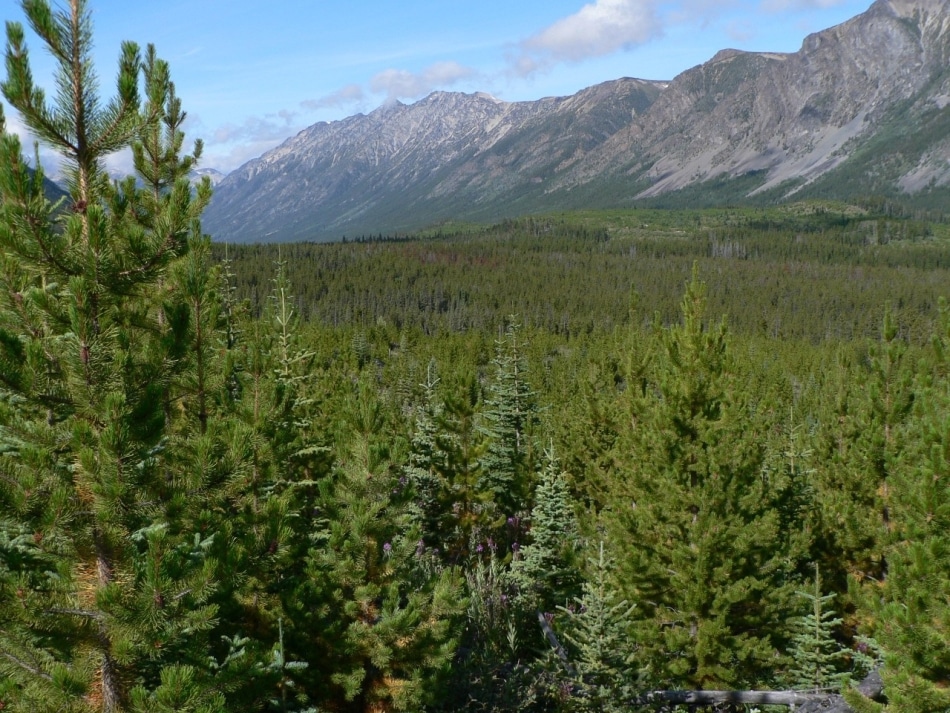Sep 23 2016
 Lodgepole pine (far left) and interior spruce trees, which share the same suite of genes that allow them to adapt to climate change, are widespread in western parts of the United States and Canada. (Photo by Jack Woods.)
Lodgepole pine (far left) and interior spruce trees, which share the same suite of genes that allow them to adapt to climate change, are widespread in western parts of the United States and Canada. (Photo by Jack Woods.)
Trees are considered to be one the most important renewable resources on the Earth. An international team of researchers from six different universities are working to understand how trees adapt to climate changes. Virginia Tech is one of the six universities involved in this research.
Researchers recently noticed that two distantly related tree varieties utilize the same genes to adapt to the range of temperatures within their geographical area. This research has been published in the September 22 issue of the journal Science.
The research team involved in investigating the adaptability of trees to climate change includes Jason Holliday, an associate professor of forest genetics and biotechnology in the College of Natural Resources and Environment and a Fralin Life Science Institute affiliate, and Haktan Suren, a doctoral candidate from the same college in the genetics, bioinformatics, and computational biology program.
A central question in biology is: how repeatable is the evolutionary process? One way to address this question is to study different species adapting to similar environments and ask whether the same genetic solutions enable that adaptation.
Jason Holliday, Associate Porfessor, Virginia Tech
With support from over 30 people, the researchers have successfully studied two types of conifer trees that are widely found in the western parts of Canada and the United States. The researchers took almost five years to study these tree species that include interior spruce and lodgepole pine. From over 250 locations across western Canada sample seeds were collected, and then sequenced more than 23,000 genes in each tree.
This large-scale analysis study highlighted that both spruce and pine utilize the same suite of 47 genes to adapt to the geographic variation in temperatures and to appropriately time acquisition of cold hardiness. This property allows plants to survive through even adverse conditions of winter.
Researchers were surprised at this discovery because of the evolutionary gap existing between the two tree species. These species began to evolve independently over 140 million years ago, when they had a common ancestor. Such similar species mostly inherit similar traits, whereas, researchers are yet to test the extent to which similarities at the genomic level amount to similar observable traits in various species.
Since we’re seeing the same genes across different species, there’s a greater likelihood that these adaptations are due to natural selection rather than just by chance.
Sam Yeaman, Assistant Professor, University of Calgary
One implication obtained from this study is that environmental adaptations may have various constraints at the genetic level. While differences in observable traits like cold hardiness is likely to involve hundreds of genes, for adaptation to take place a subset is needed, even while taking into consideration the species that diverged long time ago. This result influences the recent research that analyzes the adaptation of tree populations to changes in climate.
We have to understand climate adaptation in other conifers so we can address trees that are becoming mismatched with local conditions due to climate change. This will also help us offer better recommendations for forest management strategies in changing climates, and plant trees that are more likely to thrive and adapt more quickly to climate change.
Sally Aitken, Professor, University of British Columbia